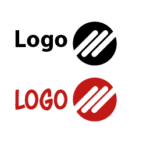So you’ve got a new, gorgeous website. Maybe you even paid a pretty penny for that new web design. But six months after launching, you haven’t seen any returns on your investment. You don’t have leads rolling in and your traffic seems to have dipped since you launched. What gives?
This is one of those hard to swallow pills, but your web design and strategy might actually be the thing holding you back.
In order to see the ROI you want from your website and get those leads rolling in, then you need to revamp your web design and strategy to address these seven culprits of lead generation failure:
1. Poor Website Navigation

The navigation should be intuitive and simple. There’s no need to complicate the process. If the navigation is too complicated, then visitors will leave. Just because the web design looks amazing, doesn’t mean it’s user friendly.
2. Slow Loading Time

The first reason it isn’t good is because Google doesn’t like it. In fact, a slow loading website can bring your Google search ranking down, which explains why your new site isn’t bringing in as much traffic as your old site did.
The other reason it isn’t good? The average visitor will only wait 2 seconds for a website to load. The competition for peoples’ online attention is more cutthroat than ever in 2021, so if your site is taking longer than 2 seconds to load, then you need to solve that issue ASAP.
3. Bad Content and Missing CTAs in the Web Design

In order to be effective, your web content needs to be clear, tailored to your audience, and crafted strategically. Google gets better and better all the time at recognizing the difference between good content and poor content, so bad copy can hurt your SEO. But that’s not the only thing that can suffer. If you confuse your potential customers or fail to invite them into a brand story, they will bounce, no question.
Something else that may be causing issues in your web design is missing CTAs. Ultimately, CTAs direct your web traffic to wherever you want them to go. If you’re using buttons that say, “click here” or “learn more,” then visitors aren’t really compelled to click on the buttons. Instead, use custom content that drives visitors to take action.
4. Unfriendly SEO Practices

In order to rank higher in Google searches and get found more easily, you’ll need to utilize SEO best practices that work for you. Keywords need to be used throughout great content, but you don’t want to overuse them–a balance has to be struck between mindful use of keywords and the writing of organic content. The links found on your site should point to the pages that are “deeper” in your site (i.e., not the pages on your main navigation). This is one way to help search engines understand the structure of your site, which gives you a sort of credibility that translates to a higher ranking.
5. No Visible Offers in the Web Design

A well-designed web site has the power to draw potential customers into your sales funnel even if they are not ready to buy. By providing something like an e-book or a checklist as a free download on your site, you provide visitors value. In exchange for the content you provide, visitors will pay you with their contact information. Now, you have a lead that you can nurture, so when the customer is ready to buy, they will come to you. After all, you have a relationship!
If visitors can’t find or see these offers, then you won’t end up with any leads. Use headlines, links, CTAs, and buttons to steer traffic to landing pages and offers.
6. Inconsistent Branding

If traffic is coming to your site from an ad, like with a pay-per-click campaign, then your site needs to match the ad campaign. Otherwise, visitors will be confused. The same thing goes for social media, printed marketing materials, and anything else that has your brand on it. If your web design wasn’t built to be consistent with an overall brand, that may be a problem responsible for the missed opportunities they see.
7. Misplaced Links and Icons

Another thing that could be causing issues for your site is links to other sites. For example, the social icons at the top of your website could be distracting to users. They’ll click on those to view your Facebook page, notice they have 4 notifications, get caught up in their personal news feed, and never make it back to your site.
Kill the seven things tanking your web design now
If you want to start climbing the Google rankings and bringing in leads, then you need to remove these seven barriers now.
They’re holding your website back from doing its job, which keeps you from doing yours.
A marketing team can remove these barriers with strategic web design that turns your site into the lead generating machine it was meant to be.
start an iconic project
